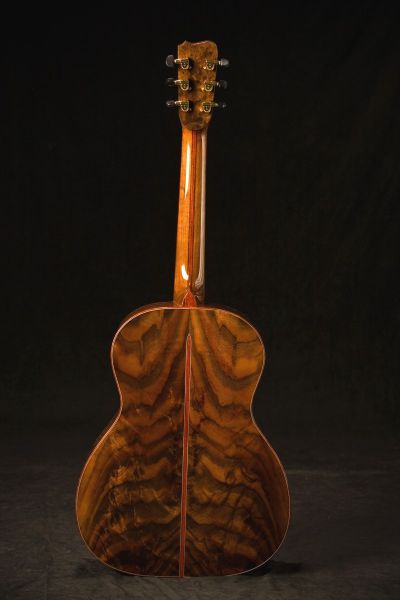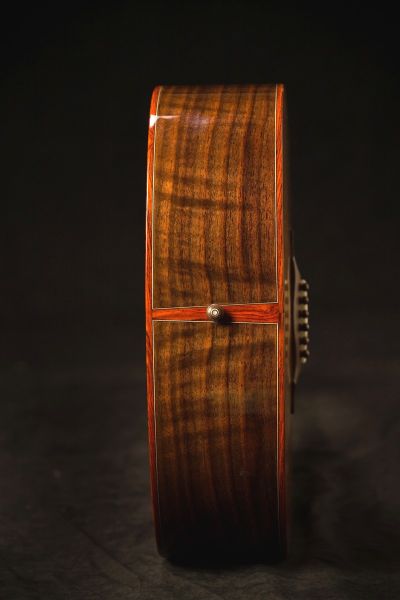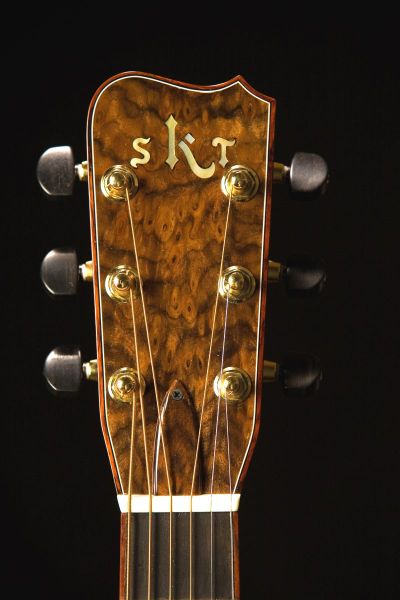Post
by Stephen Kinnaird » Wed Nov 12, 2008 11:17 am
Many thanks for your kind remarks, as well as your tremendous indulgence!
Let me answer a few:
Allen, the fine point is simply carved/sanded to suit. What's a bit tricky is wrapping the purfling around the point. It's a pretty severe angle on each piece, and what one wants is for the joint line not to show. Routing the trough is not too hard, but that last little bit of carving to fit the point is sort of a pain. The upside is that you don't have to do two miters up near the heel cap.
Dave, there are similarities and there are differences. (Man, what a safe, no-where kind of statement. I should run for office...) Of all the things, the Claro /Cedar is louder, and sort of in your face. The Coco / Engelmann is lusher, and perhaps a bit more balanced. But the woods are so different from each other, that you'd expect such things. Right?
Sebastiaan, humidity is always a concern in East Texas. Summer just adds the insult of high heat. I've got a fairly well-sealed construction room with a dehumidifier running constantly. It's rare for it to shut off.
Kim, those are good questions. Highly-figured wood is both it's own reward as well as it's own challenge. You gotta pay for all that sparkle. Some of it just won't make a guitar. For instance, I'd be nervous about crotch wood, unless used for smaller areas like pegheads or rosettes. This piece isn't crotch wood, though at the moment I can't say just where from the trunk it came. Several things you can do--leave a crazy wild back a little thicker. Brace it a little differently. Laminate a supporting veneer on the inside to stabilize it. (Several possibilities.)
But don't let an un-lively piece of wood discourage you. I've used some rather dull-sounding (but eye-popping) woods before to great effect. A piece of Ambrosia maple from Uncle Bob made a wonderfully rich and warm guitar, though the set tapped like cardboard.
Thanks for your kindness,
Steve
There are some great woods, down under!





